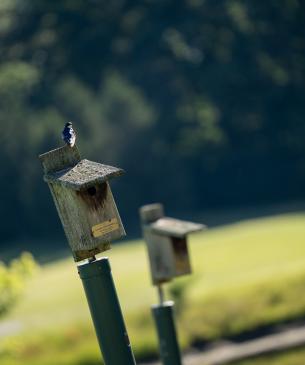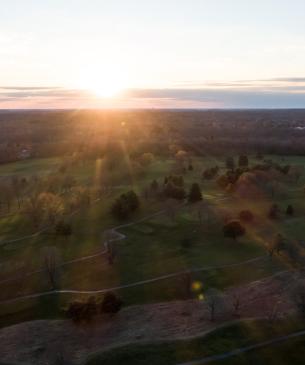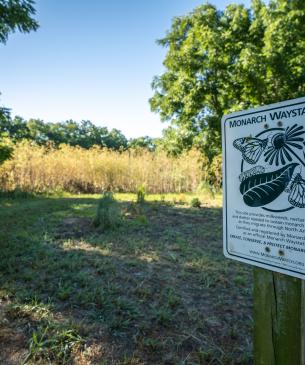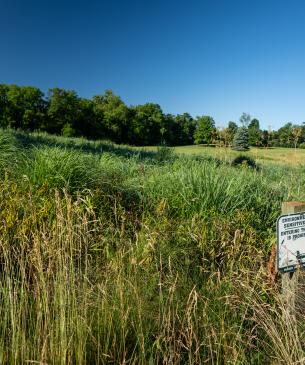More Than a Game.
Protecting Animals: Safari Golf Club works alongside the Columbus Zoo and Aquarium to strengthen the bond between us and the wildlife we share this planet with. Revenue from Safari Golf Club supports conservation efforts at the Columbus Zoo and Aquarium, The Wilds, throughout Ohio, and around the world. Safari Golf Club celebrates these partnerships by naming all 18 holes after one of the species that benefits from these projects. When you golf at Safari Golf Club, you are supporting a mission that goes beyond maintaining the lowest score; you are raising awareness and making a difference to our land and sea-dwelling teammates.
Protecting Birds: Safari Golf Club is home to a system of artificial nests that support species such as bluebirds and purple martins. Club managers have worked closely with individuals such as Darlene Sillick, Ambassador for Delaware Parks and Nest Watch to monitor birds that have resided on the course for the past 25 years! Because of this work, we were awarded the Ohio Bluebird Conservation Award.
Protecting Butterflies: Safari Golf Club provides housing for monarch butterflies to utilize during their annual migration. In fact, we are Monarch Waystation #10909, certified and known as "Gunner's Run".
Protecting Ecology: Safari Golf Club is committed to showing the public we are deserving of our title by providing a suitable environment for plants and animals alike. Since 2013, six acres have been labeled as “native areas” where native plants are able to thrive by removing invasive, non-native vegetation and minimizing the use of chemicals such as pesticides. Safari Golf Club also prides itself on the usage of electric golf carts for a minimized carbon footprint.
Protecting Nature: Safari Golf Club's luscious green fairway is actually "green". In 2018, Safari Golf Club was designated as a “Certified Audubon Cooperative Sanctuary” through the Audubon Cooperative Sanctuary Program for Golf Courses. This title has only been bestowed upon less than 2% of the 910 golf courses in Ohio and 2.7% of courses worldwide! Former Golf Course Superintendent Ted Hunker led the campaign for Safari Golf Club to achieve this incredible honor and is recognized for Environmental Stewardship by Audubon International for his dedication to the wildlife that surrounds us.
Support Our Conservation Efforts Here
Learn More About the Animals Your Golf Game Supports




